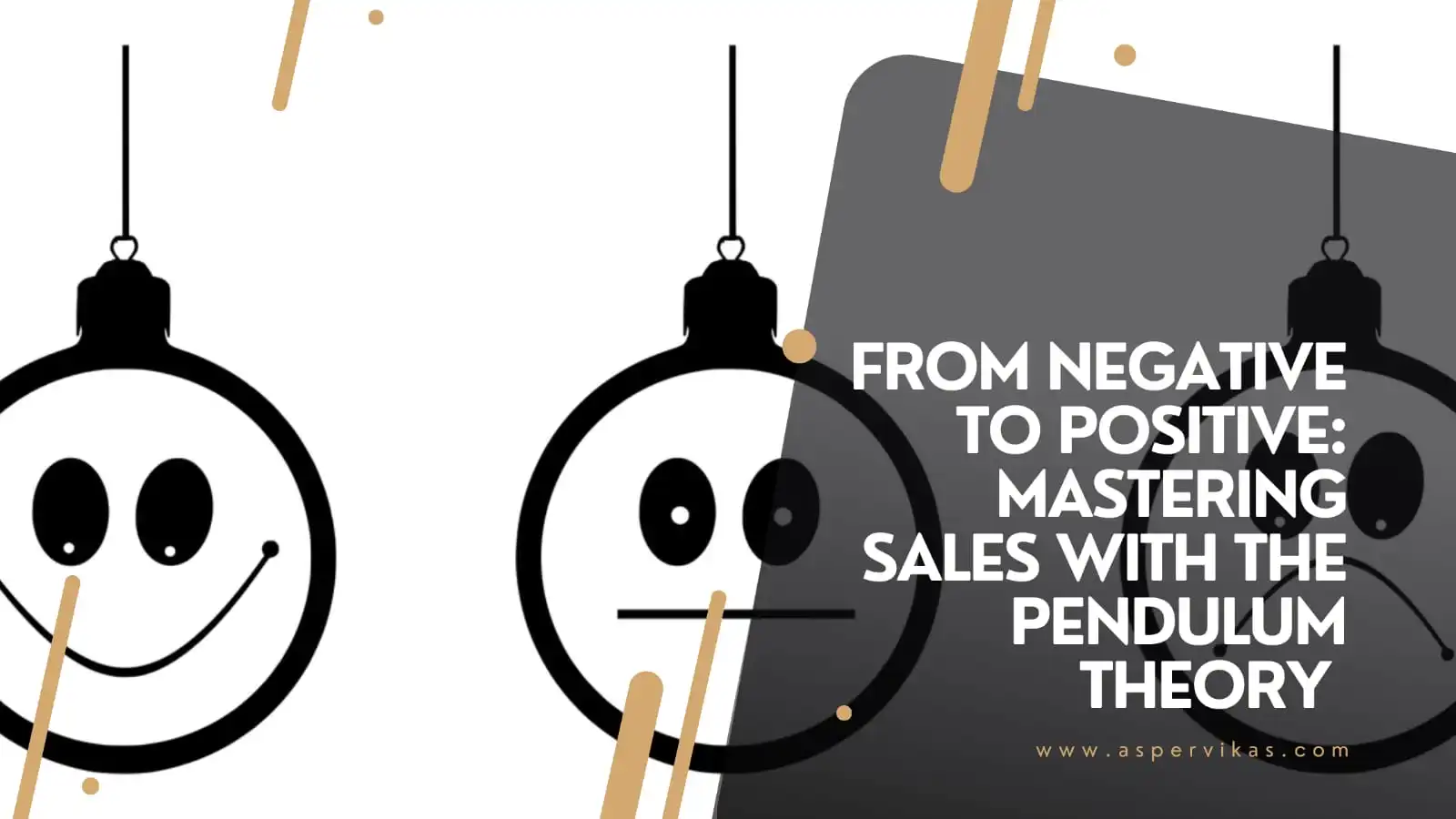Introduction:
The popular proverb “One rotten mango can spoil the entire basket” should be taken seriously by all companies. The impact of one negative client can be profound and can make a serious dent in your reputation and, eventually, in profitability. Pendulum theory is a must-have in your arsenal to deal with this.
Throughout my career as a sales professional, I have learned that turning negative clients into positive ones is one of the most important acts that every company should take seriously and deploy skilled human resources to deal with negative clients.
The process of dealing with a negative client can be challenging. Still, it is essential to remember that every interaction with a negative customer is an opportunity to turn things around. The Pendulum Theory provides a framework that offers a step-by-step approach to balancing responses and swinging the conversation from negative to positive states.
Let us understand how pendulum theory can be the right medicine for irate or negative clients.
Table of Contents
Understanding the Pendulum Theory
Just like the pendulum swings from one end to another, the conversation is skillfully swung from negative to neutral and then positive by adopting a step-by-step approach. The process involves active listening, empathizing, rephrasing, addressing concerns, and providing solutions.
Step-by-Step Guide
1. Listen Actively and Empathize
2. Address the Core Concerns
3. Provide Solutions and Value
4. Follow Up and Ensure Satisfaction

Real-World Conversation
Scenario: Vinay is a student of ABC Stock Trading Education Institute. His experience has not been as per his expectations, and he is dissatisfied with the advanced stock trading education program. He expresses his frustration to Seema, who is a student service executive.
Initial Negative Interaction
Vinay: “I am really disappointed with the Super Trader program. It has not met my expectations at all. I feel like I have wasted my money.”
Seema: “I am sorry to hear that you are feeling this way, Vinay. Can you please share more about the specific aspects of the program that have not met your expectations? Your feedback is important to me.”
Vinay: “The technical training content was too basic, and I did not find it helpful. I expected more advanced strategies to improve my skills as a FnO trader. More ever, the live trading classes are not held as promised earlier .”
Seema: “I understand your concern. We need to meet our student’s expectations. Let us delve into the areas where you felt the content was lacking so we can address them directly.”
Shifting to Neutral
Vinay: “Well, I wanted more in-depth training on technical indicators like RSI, MACD, Bollinger bands, etc., and advanced options strategies like different spreads, straddles, and strangles with their application in the live market. Instructor Mr. Salim did not teach all the strategies, and when I asked my doubts, he neglected them.”
Seema: “Thank you for sharing that. We intend to provide comprehensive training, and it seems we may have missed the mark here. Your feedback is indeed crucial. How about we arrange a one-on-one session with Mr. Salim on these topics? This way, we can ensure you get the in-depth knowledge you are seeking. It will also help you solve all your doubts.”
Vinay: “That sounds better. I also feel that you must teach a few adjustment strategies in the class in case our first strategy fails.”
Seema: “I appreciate you pointing that out. Since the market is very dynamic, we may often face a trade position that counts as a loss. Adjustment techniques may direct us on how to minimize loss by taking a counter position. I will make suggestions to the training team. Would that be helpful for you?”
Vinay: “Yes, that would be more useful.”
Moving to Positive
Seema: “Great! We want to make sure you gain the maximum benefit from the super trader program. Additionally, we can offer you access to our live trading sessions with top traders at no extra cost as a gesture of goodwill. These sessions cover more advanced trading strategies and techniques.”
Vinay: “That sounds like a good offer. I am glad that you are making efforts to make things right.”
Seema: “We are committed to your success, Vinay. I will schedule your one-on-one session and provide the study materials shortly. If you have any other concerns or need further assistance, please do not hesitate to reach out.”
Vinay: “Thank you. I am looking forward to the advanced training sessions and one-on-one calls with Salim. I appreciate your prompt response and willingness to help.”
Seema: “It is my pleasure. We value your feedback and are here to support you every step of the way. Thank you for allowing us to improve your experience.”
Things to remember:
I have explained the pendulum theory from a customer service perspective, but sales professionals can also master it to convert negative prospects into customers. It is an effective strategy, but it may take time and effort to master it. I suggest the following things to remember while you learn pendulum theory.
- Do not promise something that you can’t keep.
- Sales / Customer Service Executives should be well-trained to handle irate clients.
- Make case studies of success stories.
- Active listening and empathy are important qualities for handling tough conversations.
- Use advanced technical tools to detect, identify, and understand negative remarks about your company on the internet posted by dissatisfied clients and immediately take appropriate actions to reverse the client’s bad experience.
- Training customer service executives on consumer psychology can be an added advantage.
More readings on Pendulum Theory
Pendulum Theory: People will naturally resist being pushed in one direction


Leave a Comment